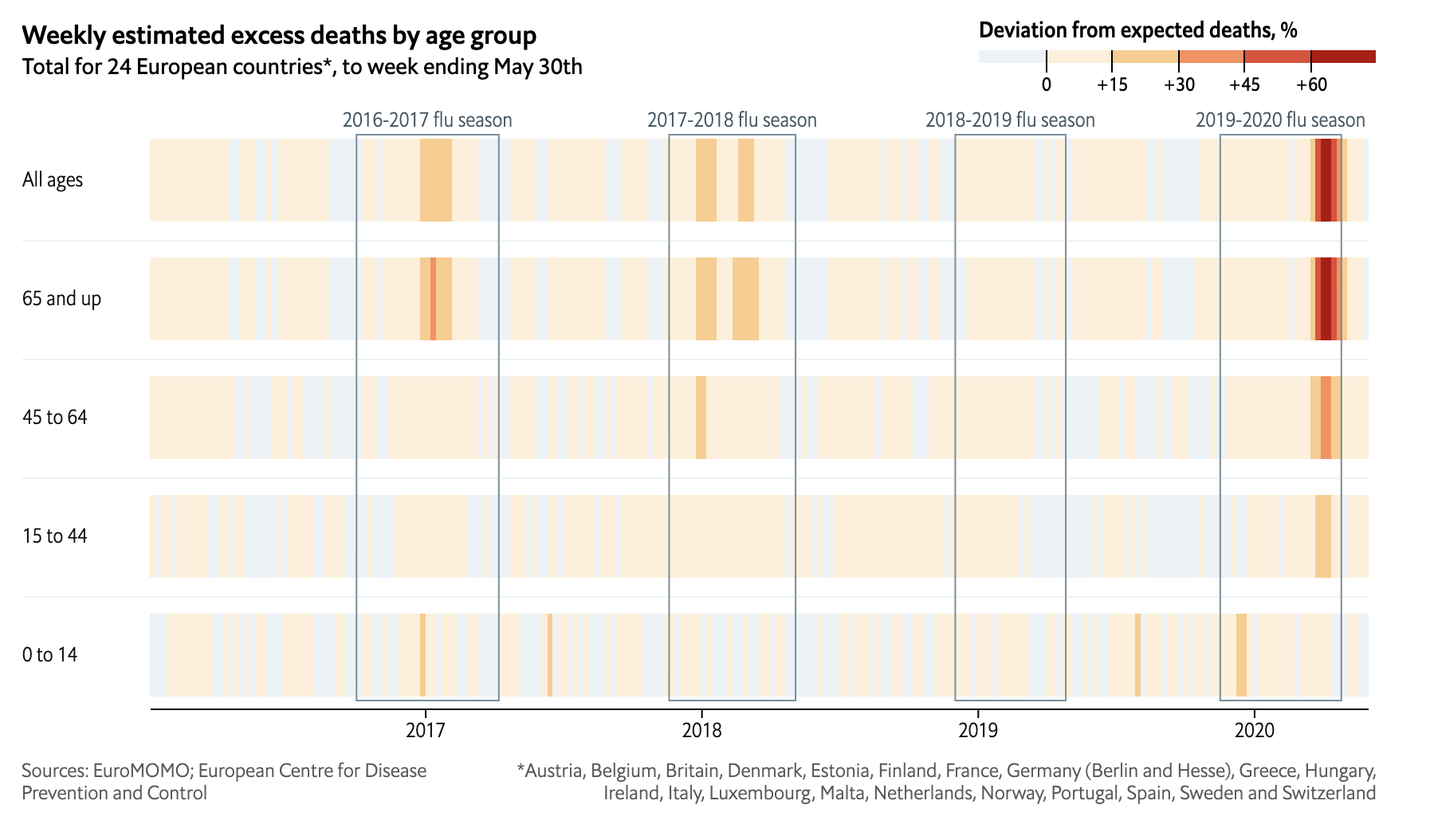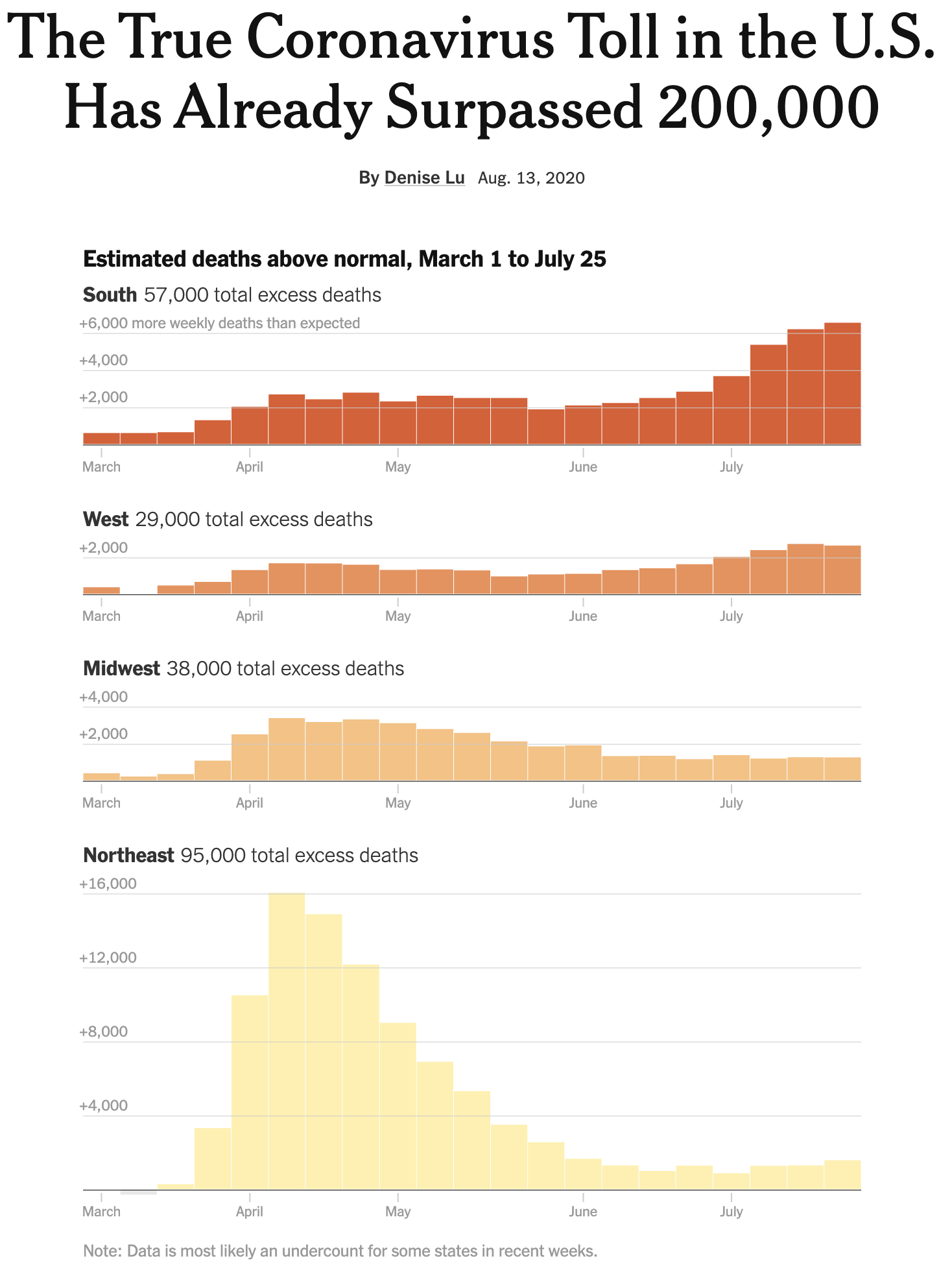Is the COVID death count exaggerated?

Excess deaths and the mortality of the coronavirus
Even though the pandemic isn’t over, many Americans are over it, so to speak. During our semi-national, semi-lockdowns back in April we saw angry protestors demanding that their states be “liberated” from the restrictions that slowed the spread of the virus. Months later as restrictions, inconveniences, and hardships continue, many more of us are feeling like we just want it to be over.
It’s reasonable at this point in the pandemic to re-evaluate our response to the virus. There is a natural, growing desire to minimize the social distancing effort and to get back to something closer to “normal.” I feel that desire too. A lot has happened to us psychologically, and the economic damage from the pandemic is multiplying. We have learned much about SARS-CoV-2 since March but there remains a long list of unknowns so science alone can’t tell us what to do. Our values and our sense of what risks are acceptable will influence our choices.
Nevertheless we should weigh the data we have. Every choice we make in this pandemic is a trade-off. Every restriction, and every reopening, has consequences. An honest opinion acknowledges the real costs of a choice. If you think the US should start a new, stricter shelter-in-place, then you must acknowledge the profound costs of that, and the relative benefit of fighting coronavirus vs spending that kind of social and financial capital in some other way. If you think the US should open up completely, then you must acknowledge that more than a quarter-million Americans will be dead from COVID before the end of the year.
I’ve heard from people with strong opinions on both sides, and some of them are failing at this. They know what they want and they focus on the benefits of their “side” while subtly (or not so subtly) dismissing the costs, or refusing to quantify them. For those who want a stricter fight to contain the virus, the argument leans toward “you can’t put a price on a human life” (but you can and we do all the time). Those who want to reopen tend to dismiss the COVID death numbers as inflated or politicized or irrelevant because in their county or town, only one or two people have died.
In keeping with my mission to shine light on what we do know about the pandemic and the virus, let me address the mistaken idea that official coronavirus death numbers are exaggerated.
According to Johns Hopkins Coronavirus Resource Center, the premier US organization that has been tracking coronavirus data since the pandemic began, over 160,000 Americans have died of COVID-19 as of today, August 9, 2020. This number is more likely too low rather than too high. How do I know this? Excess deaths data.
Excess deaths or excess mortality is a measure of how many additional people have died than would be expected in a normal time. It’s simple, objective, and not political. Just take the number of people who died (for any reason) in a given place and period of time, and then compare it with the recent historical average. If, for example, over the last ten years an average of 100 people die in the month of April in your town, but 120 people died in April of 2020, then there were 20 excess deaths. (When done properly, this analysis uses statistical methods to account for normal variation from one year to the next.)
When we see excess deaths starting in February of this year, it’s safe to assume that the majority of those excess deaths are a result of the pandemic in one way or another. They are mostly people who died of COVID, plus some who died for other reasons as a consequence of pandemic disruptions (such as a stroke patient who stayed away from the hospital too long).
The figure at the top of this post comes from The Economist which is tracking excess deaths all over the world. Most countries are experiencing significant excess deaths in 2020 (see data here). If a country is testing enough and diagnosing all their COVID cases, then the number of excess deaths will be similar to the COVID death toll. That is the case in France and Sweden, for example. In other places testing is not as widespread. In Peru and Ecuador, the number of excess deaths is several times greater than the official COVID count. This means many people are dying of COVID without being diagnosed.
In the US, excess deaths are greater than our official COVID death tally by about 25%. This is not a surprise because testing capacity has been limited in many places during the pandemic.
The takeaway is this. A lot more Americans have died this spring than normal. The number of people who have died, who statistically speaking should still be alive, is greater than the number of recorded COVID deaths. It doesn’t matter whether the tests are accurate, or what the death certificates say about cause of death: the official coronavirus death toll is almost certainly lower than it should be.
UPDATE 8/13/2020: The New York Times just published the latest data on excess deaths in the US, by state and region. The data show official COVID deaths are a significant undercount of the actual pandemic toll. Here are the numbers:
Amy Rogers, MD, PhD, is a Harvard-educated scientist, novelist, journalist, and educator. Learn more about Amy’s science thriller novels, or download a free ebook on the scientific backstory of SARS-CoV-2 and emerging infections, at AmyRogers.com.
Sign up for my email list
Share this:




0 Comments